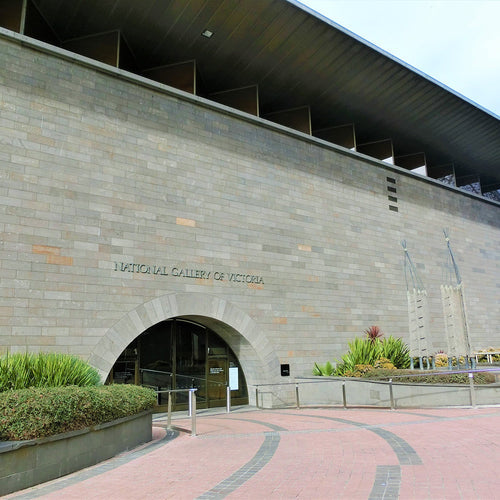In the world of art, there are many specialized professions besides the artists who create the artwork. Each requires different skills and knowledge, and plays an important role in supporting the field of art. Below, we have introduced the specific job content, required conditions, difficulty level, and estimated income for major job types. Regarding income, please refer to the Ministry of Health, Labour and Welfare's "Basic Wage Structure Statistics Survey" and museum job postings. This estimate is based on job posting data by occupation from job search websites (such as Recruit Next, doda, etc.).
1. Curator (mainly a curator at a museum) *1
Job description
We plan and manage exhibitions, manage and preserve artworks, and conduct research and educational activities related to art. For example, you might plan exhibitions based on the museum's collection, and also be involved in catalog production and public relations activities.
Necessary conditions
- If you want to become a curator, you need a curator's license (obtain it by taking designated courses at a university).
- Knowledge of art history and cultural property protection
* Practical experience (internship is an advantage)
Difficulty level
Obtaining the curator's license itself is not that difficult, but being hired as a regular employee of a museum is a very narrow path. The competition is high, and expertise is required.
Estimated income
The average annual income is around 3 to 5 million yen. Many people are employed as civil servants, and can expect a stable income.
2. Art dealer ( art merchant ) *2
Job description
They sell artists' works in galleries and at auctions, and build relationships with collectors and corporations. The ability to analyze market trends and evaluate works of art at appropriate prices is required.
Necessary conditions
- Knowledge of art and marketing
- Communication skills
- Market analysis skills
Difficulty level
Track record and networking are the keys to success. Working at a gallery or auction house is advantageous for gaining experience.
Estimated income
Annual income ranges widely from 3 million to 10 million yen or more, depending on the degree of success. Handling high-value transactions can potentially generate significant income.
3. Art Manager
Job description
We support artists' activities and comprehensively manage the operation of exhibitions and projects. I will also be in charge of fundraising and public relations activities.
Necessary conditions
- Management skills
- Knowledge of the art industry
- Ability to coordinate and negotiate
Difficulty level
A wide range of skills are required for a successful project. To gain experience, it's important to have a track record of working with galleries and at art events.
Estimated income
The annual salary is around 4 to 8 million yen. Working as a freelancer can sometimes lead to an unstable income.
4. Art Writer
Job description
This job involves writing reviews of exhibitions and artworks, as well as interviewing artists, to convey the appeal of art. I often contribute articles to specialized magazines and web media.
Necessary conditions
- Knowledge of art and writing skills
- Writing skills and analytical skills
- Information gathering skills
Difficulty level
It is common to work as a freelancer, and acquiring work requires a track record and network of contacts.
Estimated income
Depending on the project price, the annual income is generally around 2 to 5 million yen. Becoming a well-known writer can potentially lead to even higher earnings.
5. Restorer (Conservation Restorer)
Job description
We restore artwork such as paintings and sculptures, and are responsible for preserving them as cultural assets. Based on scientific analysis and material research, we improve the condition of the artwork.
Necessary conditions
- Specialized education in art conservation and restoration (university or graduate school)
* Knowledge of chemistry and materials science ※3
- Practical experience (internship or apprenticeship)
Difficulty level
Because advanced specialized knowledge is required, it is necessary to have a mindset of continuous learning. Training in Europe, where there is a long history of cultural property restoration and highly advanced technology and research, will be helpful for career advancement.
Estimated income
The annual income is generally around 3 to 5 million yen, but if you succeed as a freelancer, you could earn more than 10 million yen.
6. Art Therapist
Job description
We provide psychological support through art. We provide mental health care to clients through the creation of paintings and sculptures.
Necessary conditions
- Professional qualification in art therapy
- Knowledge of psychology
- Communication skills
Difficulty level
A psychology qualification and clinical experience are required. In addition, experience in welfare facilities or educational settings is required.
Estimated income
Depending on the place of employment, the annual income is around 3 to 6 million yen. For freelancers, income depends on the number of clients.
All of these professions are indispensable for enriching the world of art. Each path has different challenges, but by choosing a profession that suits your interests and skills, you can build a fulfilling career.
However, the Japanese art market is small, accounting for only about 1% of the global market, and there may be a harsh reality in terms of income. However, in recent years, media such as social media and YouTube, which allow individuals to communicate with low costs, have become mainstream, and I believe that there is a good possibility of success as a business by effectively utilizing these.
Annotation
*1 In the business field, curation is increasingly used to mean "organizing a vast amount of information or products, selecting valuable items, and delivering them to customers." The person who plays this role is called a "curator."
*2 Among art dealers, those who own their own gallery are called gallerists.
*3 Materials Science is a field of study that researches the properties and structures of materials and explores ways to apply those characteristics. It is related to a wide range of fields such as physics, chemistry, engineering, and biology, and is an important field that supports the foundation of manufacturing and processing.






